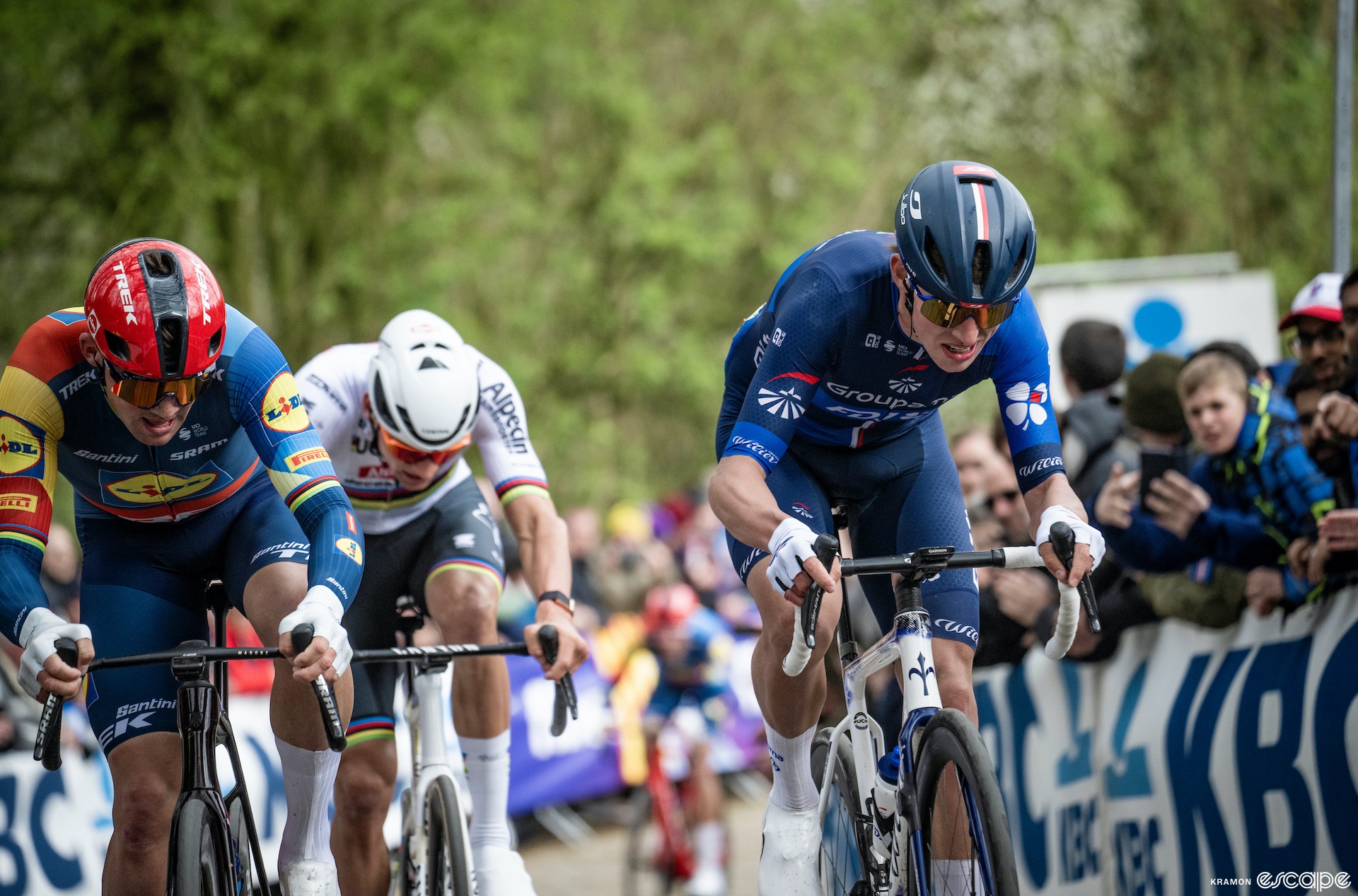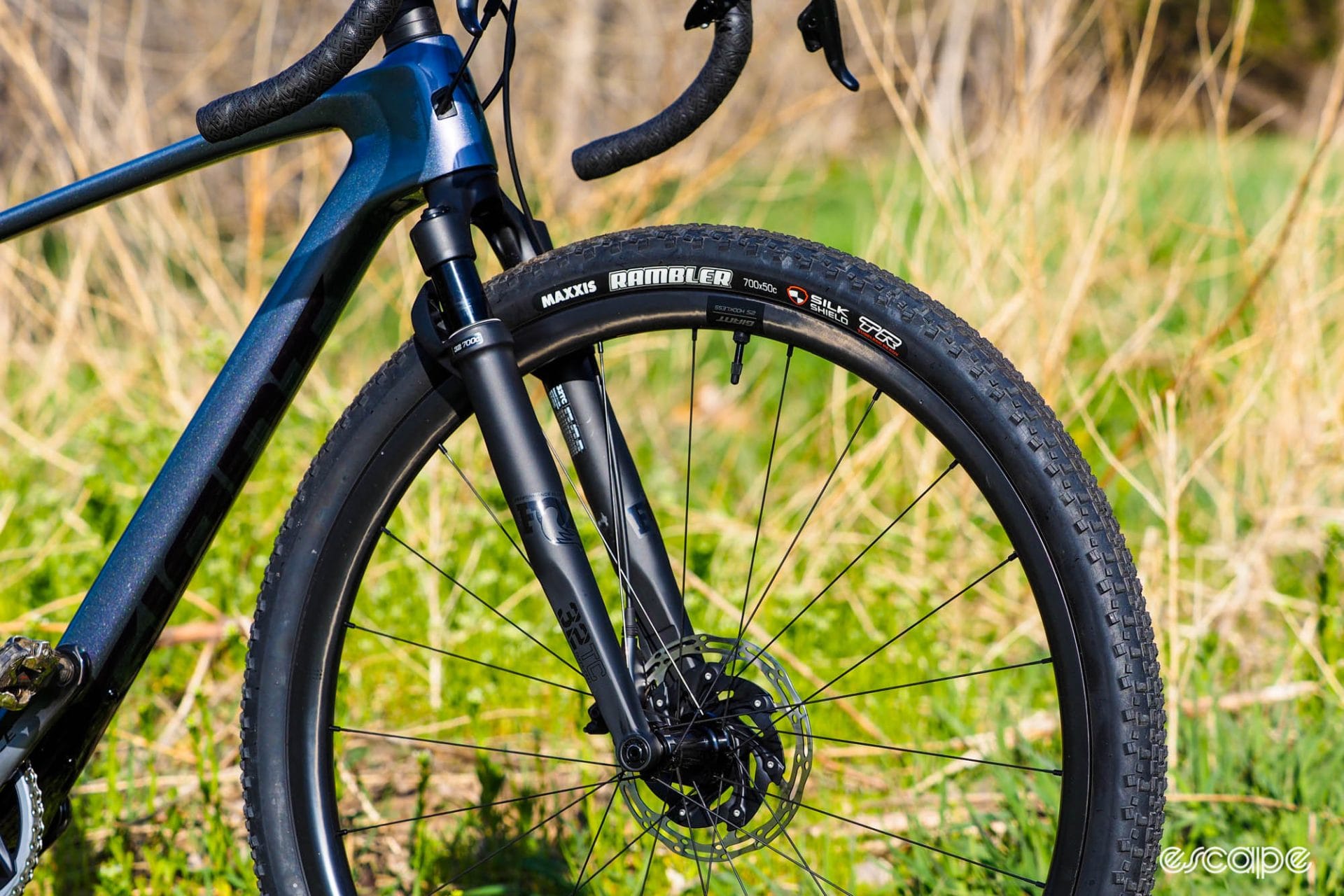With the Spring Classics in the books – but before we shift fully into stage racing mode – late April is the perfect time to look back on the Classics campaign as a whole and draw some conclusions about what we learned.
Remember when Visma-Lease a Bike seemed destined to be the team to beat throughout the spring? Remember when it was still at least kind of surprising to see Tadej Pogačar and Mathieu van der Poel attack from 30+ km out?
Among the many topics of discussion to come out of this spring (in the Northern Hemisphere, at least) is this year's crop of breakthrough performances. Every year, new riders take steps forward on the cobbles and climbs that define the Classics, and now that those races are in the rearview mirror, we have the perspective to highlight those riders and their progress. In no particular order, here are a few big names from the men's peloton that took steps forward in 2024.
Laurence Pithie
It's hard to overstate just how impressive Laurence Pithie's Classics campaign was in the context of where he is in his young career. Just 21 years old and without a single Monument start on his resume at the beginning of the season, the Kiwi on Groupama-FDJ now has three to his name.
Considering that Pithie started the Classics with no experience in the biggest races, any kind of performance at all could reasonably be called a step up, but Pithie did more than just show up to the races. He showed himself trying to chase the big moves at races like Kuurne-Brussel-Kuurne and Gent-Wevelgem, he was at least a threatening sprint presence in second or third groups elsewhere, and he capped it all off with a top-10 ride at Paris-Roubaix. This is all off the back of his WorldTour win at the Cadel Evans Great Ocean Road Race, too.
Classics success so often comes down to experience, so it stands to reason that Pithie will continue to improve in the coming years.
Toms Skujiņš
Frequent Escape Collective readers will know that we're huge fans of Toms Skujiņš (Lidl-Trek) already, but surely unbiased observers would also see what he did this spring as a huge step up. He came into 2024 having raced 19 Monuments and a boatload more lower-tier Classics, so he clearly had the experience, but Skujiņš combined that with excellent form to deliver his biggest results yet this year in a wide-ranging Classics campaign.

His runner-up ride at Strade Bianche was the most memorable and impressive of those results, seeing him finish ahead of riders who were heavier pre-race favorites, like Tom Pidcock. He put in a few more impressive rides after that too, landing eighth at E3 and 10th – his first ever top 10 in a Monument – at the Tour of Flanders. His versatility was particularly impressive; he stayed very busy from the Omloop Het Nieuwsblad all the way through to Liège-Bastogne-Liège, starting most of the WorldTour one-days in that stretch.
For a Lidl-Trek team whose two star leaders (Mads Pedersen and Jasper Stuyven) both saw their Classics campaigns either slightly or fully derailed by crashes, what Skujiņš did must have been a breath of fresh air this spring.
Jonathan Milan
Speaking of Lidl-Trek breakthroughs, how about Jonathan Milan? Prior to 2024, Milan's spring results featured a whole lot of DNFs without many strong showings to speak of, but he made an impact at both Gent-Wevelgem and Dwars door Vlaanderen in March. At the former in particular, that meant more than just being a threatening sprinter behind the winning move, as he also put in some surges of his own to help Lidl-Trek teammate Mads Pedersen contain and then beat Mathieu van der Poel (Alpecin-Deceuninck).
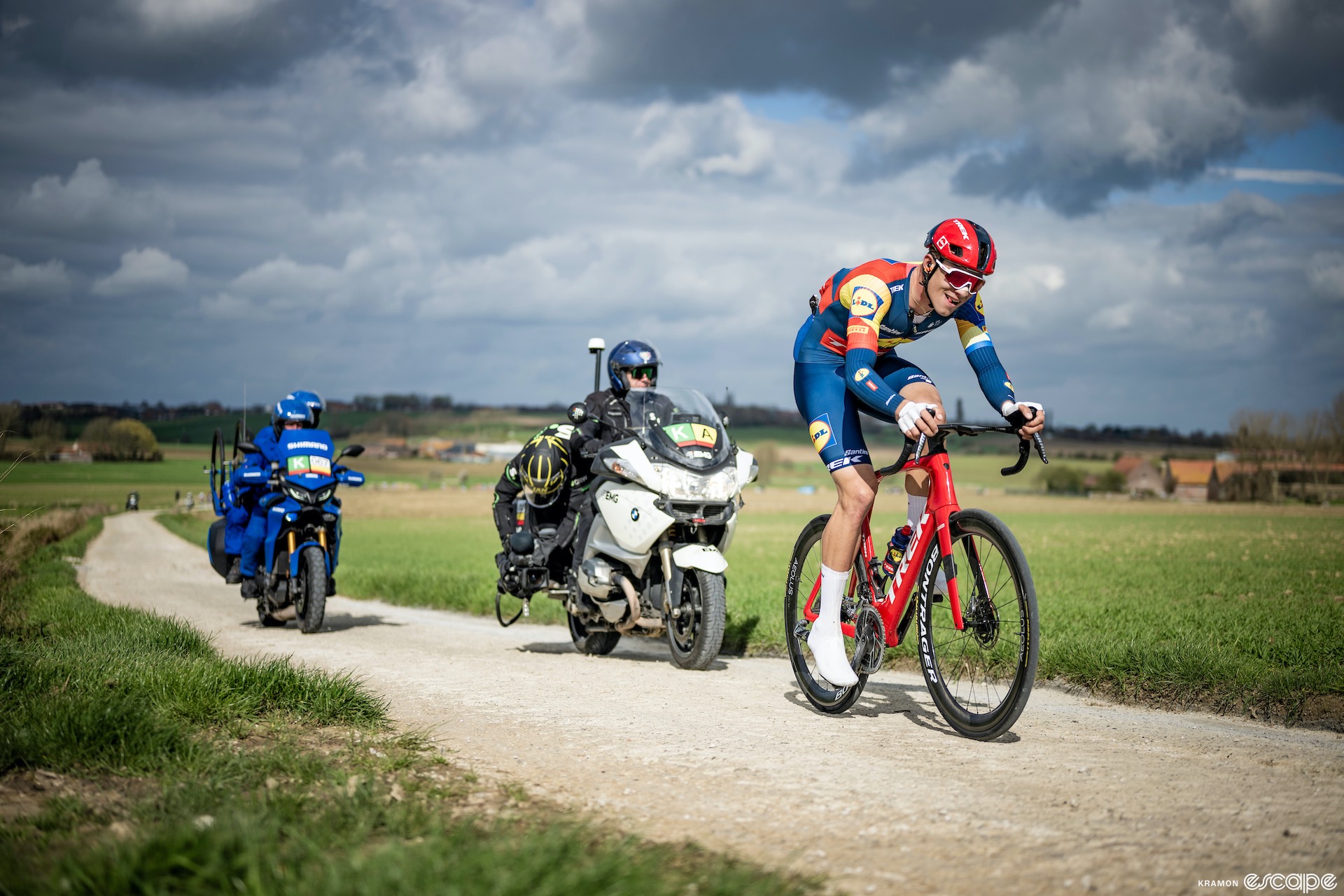
The fact that Milan was able to land inside the top 10 at both races without relying on the sprinting legs that propelled him to a Giro d'Italia points title last year bodes very well for his Classics future. We already knew he could sprint, and now, still just 21 years old, he has shown that he has the potential to follow moves even on Classics terrain. His size might make him a better fit at the flatter races of the spring (as opposed to, say, the Tour of Flanders), but either way, he could well continue to develop into a serious Classics contender.
Jasper Philipsen
We move from the reigning maglia ciclamino winner to the reigning maillot vert. Philipsen (Alpecin-Deceuninck) wasn't exactly an unknown before this spring, obviously, but I'm the one defining what counts a step up here and the way I see it, Philipsen's win at Milan-San Remo and second straight runner-up ride at Roubaix mark a clear breakthrough from what we had seen so far.
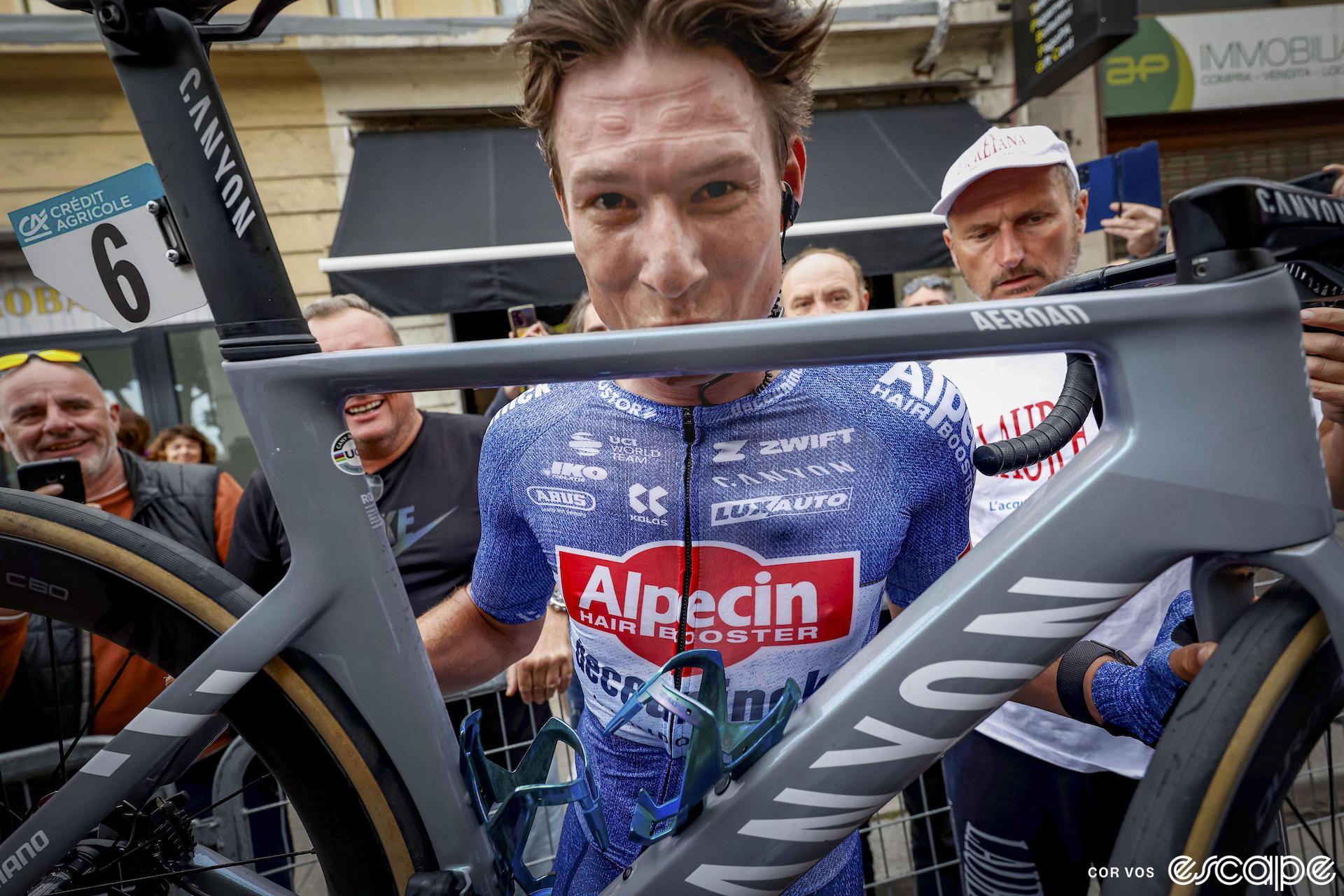
To win San Remo, Philipsen had to be one of the dozen riders in the lead group that battled on the Via Roma, which meant surviving the near 300 km of distance and, of course, the Poggio. Thus far in his career, he simply had not shown that he could be relied upon to make that selection.
From that point on, his biggest results were repeats of last spring: a second straight win at Brugge-De Panne and a second straight runner-up ride at Paris-Roubaix. Altogether, it paints the picture of a rider that went from someone with obvious potential to be a Classics star to a consistent Classics contender. After this spring, we can't wait to see what happens with Philipsen's soon-to-be-expired contract, and whether Alpecin-Deceuninck re-sign him or let him walk …
Maxim Van Gils
What a year it has been for Maxim Van Gils (Lotto Dstny). The 24-year-old was officially suspended for the start of the 2024 season after striking another rider at the Japan Cup Criterium late last year but from the moment he started racing, he got busy taking several strides forward. For starters, he won the lone time trial stage of the Ruta del Sol, and then he went on to a surprising third-place finish at Strade Bianche, where, as we said above, so many other big names started as stronger favorites to land on the podium.
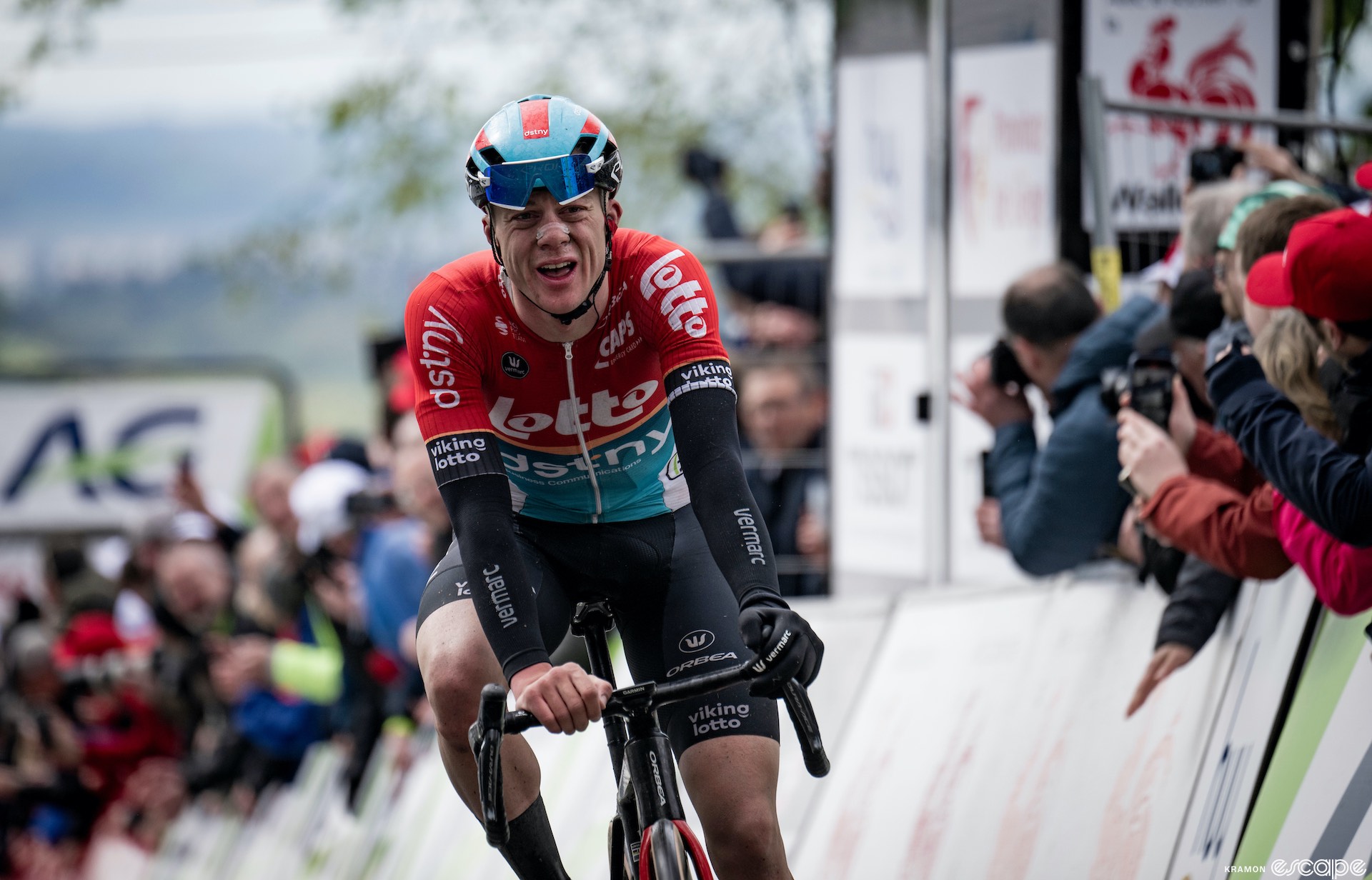
He went on to leverage his punchy skillset into top 10s in Milan-San Remo (seventh), the GP Miguel Indurain (second), La Flèche Wallonne (third), and Liège-Bastogne-Liège (fourth) as well. In general, he wasn't really in contention to actually win any of those races, where the eventual victors were generally well ahead of him, but 2024 was undoubtedly his strongest spring yet, and that must have been appreciated by his Lotto Dstny team, which was probably expecting similar results from a different rider, Arnaud De Lie – who cut his own one-day campaign short due to illness.
Did we do a good job with this story?

